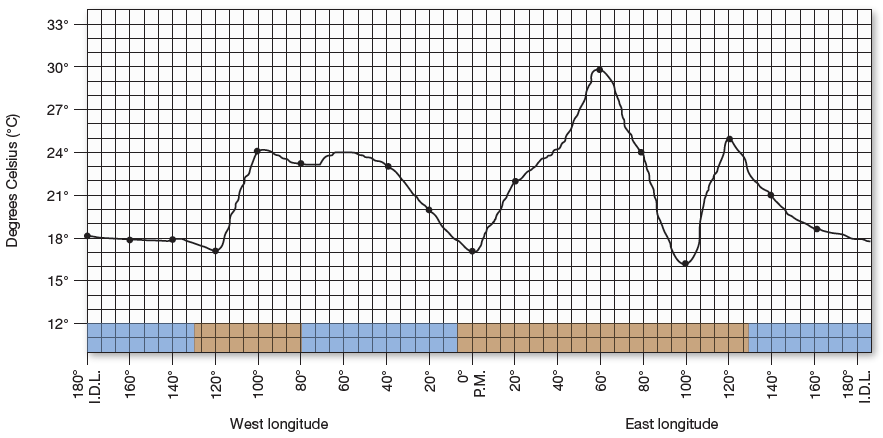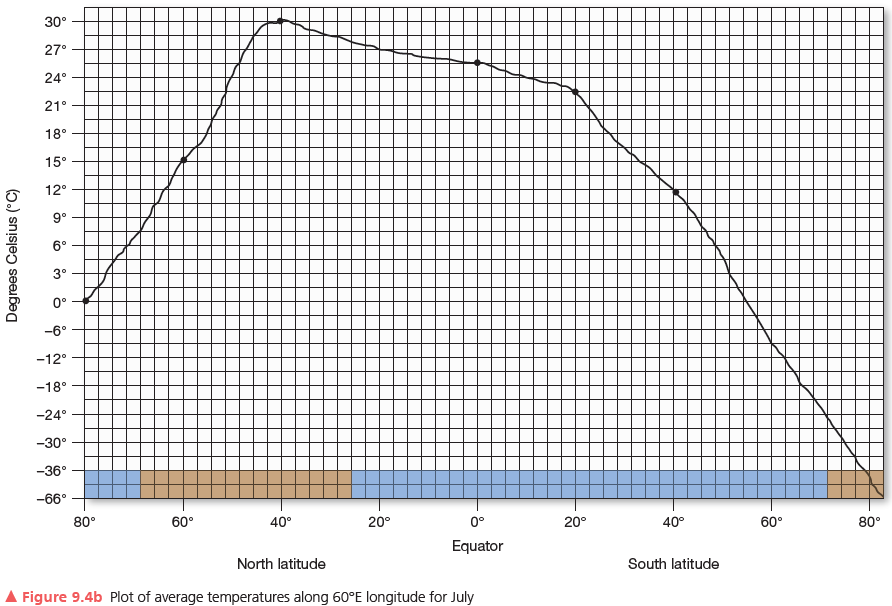Describe and explain the differences in temperature patterns between the Northern and Southern Hemispheres in January and July. What is the general pattern of isotherms? What are the extreme highs and lows in each hemisphere in January and July? Which hemisphere has the least amount of seasonal change?


What will be an ideal response?
January: Extremely cold temperatures due to size of Asian landmass that cools rapidly and to a great extent. July: Extremely warm temperatures due to size of Asian landmass that heats rapidly and to a great extent.
You might also like to view...
How can the energy efficiency of coal-burning power plants be doubled?
A. cogeneration B. recycling C. burning the coal more than once D. convection ovens
The Lisbon earthquakes of 1755 are historically significant because ________.
A. the reconstruction efforts after the earthquakes stimulated the Portuguese economy, leading to a century of prosperity for the country B. they resulted in more deaths than any other earthquake, before or after C. they changed the prevailing philosophies of the era, producing a more pessimistic view of the world D. it was the first time anyone had ever successfully predicted an earthquake
This biome is characterized by a well-developed vertical structure with three distinct layers: an overstory, a middle canopy, and understory
A) midlatitude broadleaf and mixed forest B) tropical rain forest C) desert D) Mediterranean shrubland
Which of the following is true of mutations?
A) They will always cause a genetic disease. B) They are always fatal. C) They are never fatal. D) Some are harmless and some quite dangerous.